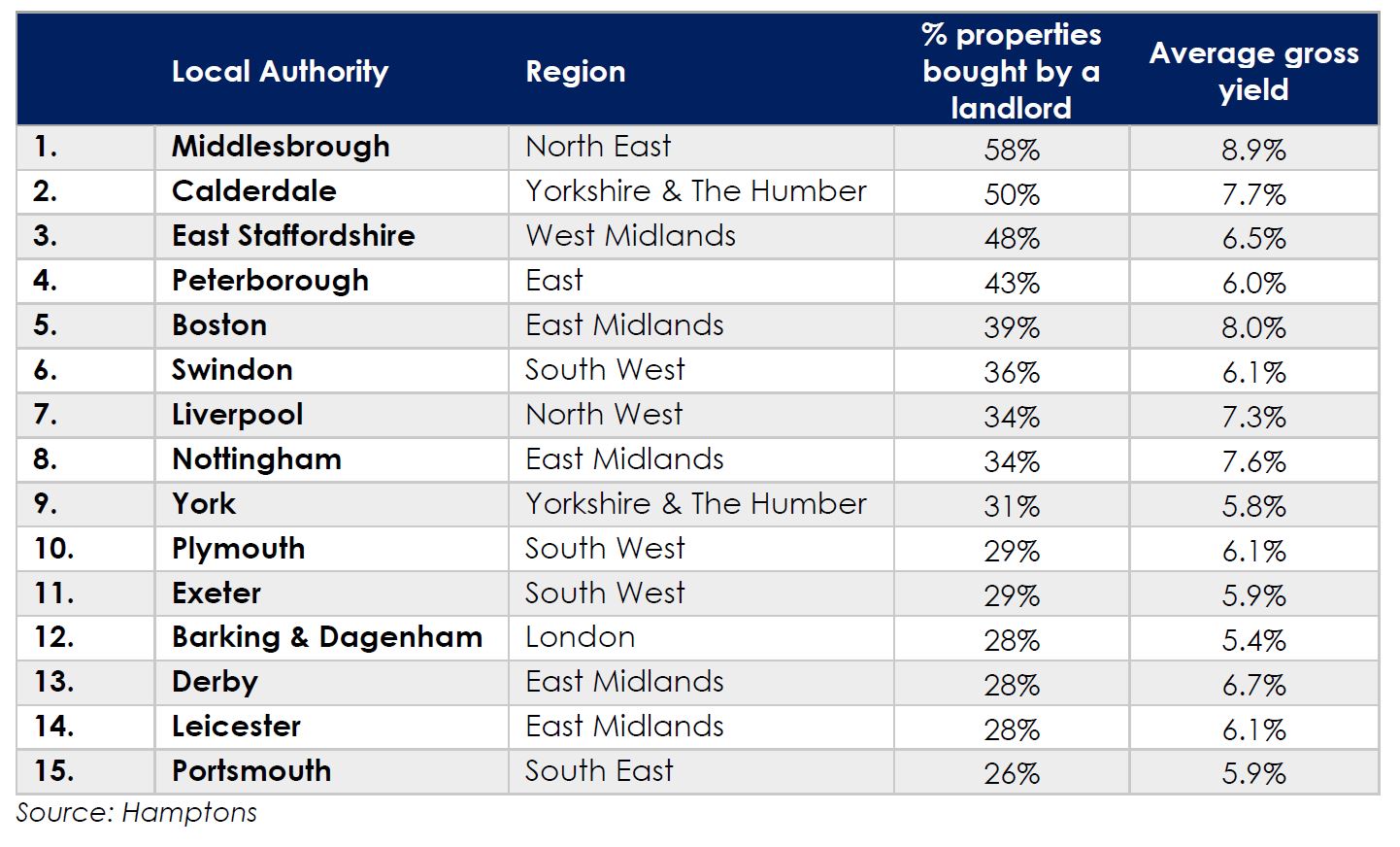
The Hamptons Monthly Rental Index for March 2022 shows the appetite for property investment is on the rise again, with the share of homes purchased by owners across Britain rising from 12.0% to first quarter of 2021 to 13.9% in the first quarter of 2022.
This year’s figure marked the highest proportion recorded in the first quarter of any year since 2016, when investors rushed to beat the 3% stamp duty surcharge on second homes which was introduced in April 2016.
Overall, investors bought 42,980 homes across Britain in the first three months of this year, equivalent to £8.5billion worth of property, almost double the figure (4 £.6 billion) recorded before Covid in the first quarter of 2019.
The increase in rental purchases could help reverse the decline of the private rental sector which fell from a peak of 5.3 million units in 2017 to 5.0 million in 2021.
For the first time since 2016, investors bought more properties than they sold.
The share of homes sold by investors fell from 14% in 2021 to just 10% in the first quarter of 2022, the lowest proportion in 10 years. This means there was a net gain of 13,480 rental properties in Britain in the first quarter of 2022, compared to a net loss of 7,640 in the first quarter of 2021.
Investors are increasingly turning to the country’s most productive regions as a way to maximize their returns and hedge against inflation. So far this year, 71% of investors have bought in the country’s 50% most productive areas, up from 57% a decade ago.
It’s also one of the reasons why almost three-quarters (73%) of London-based landlords bought their rentals outside the capital this year, where yields tend to be higher, compared to fewer a quarter (24%) a decade ago.
The North East is Britain’s rental capital, where investors bought 27.7% of homes sold in the first three months of this year, more than double the share bought by first-time buyers ( 12%).
It is also the region that has seen the largest year-on-year increase in rental purchases. This is perhaps unsurprising given that it offers the highest gross yields in the country, averaging 9.0% compared to 6.5% in England and Wales.
Middlesbrough tops the list of local authority buy-to-let hotspots – 58% of homes sold in the area in the last six months were bought by an investor. With an average gross return of 8.9%, it is the 13th most profitable local authority in England and Wales. While the Northern regions dominate the buy-to-let list, six Southern regions feature in the top 15, including London’s most affordable borough, Barking and Dagenham.
However, the lack of stocks available for purchase means that investors increasingly have to pay the asking price. While landlords are known to bargain hard, competition from other buyers has meant that so far this year 40% of investors have had to pay more than the asking price for their new buy-to-let. For the first time since our records began, the average investor is paying more than 100% of the asking price for a buy-to-let in England and Wales.

Last month the average cost of a new rental in Britain rose to £1,115 pcm, up 9.1% from its 2021 low of £1,022 pcm in March last year .
Although this represented an increase in rent growth after six months of cooling, Hamptons expects it to slow again in the coming months given how quickly rents have accelerated from 2019. April last year.
Rents in Inner London saw the strongest growth as they continued to recover. Even so, at an average of £2,571 pcm, up 21.3% year-on-year, the average house in Inner London costs £99 or 3.7% less than in March 2019. Outside of London, the South West recorded the strongest rental growth, at 14.9%.
Aneisha Beveridge, head of research at Hamptons, commented:
“Tax and regulatory changes have weighed heavily on the buy-to-let industry over the past five years, pushing more owners to sell at a time when fewer new entrants were looking to buy.
“As a result, there are around 300,000 private rental homes in Britain today than at the peak of the sector in 2017. Although we expect investors to continue to buy at around the same rate Over the course of 2022, this is unlikely to be enough to offset the total loss of rental housing over the past five years.
“The lack of rental housing is one of the reasons why rents have increased at such a rate over the past year. March set a new record for rent growth as rents rebounded from 2021 lockdown lows last March.
“But as these new rental purchases begin to fuel the rental market over the next few months, we expect to see rental growth slow, especially as the cost of living crisis also weighs on the affordability.”